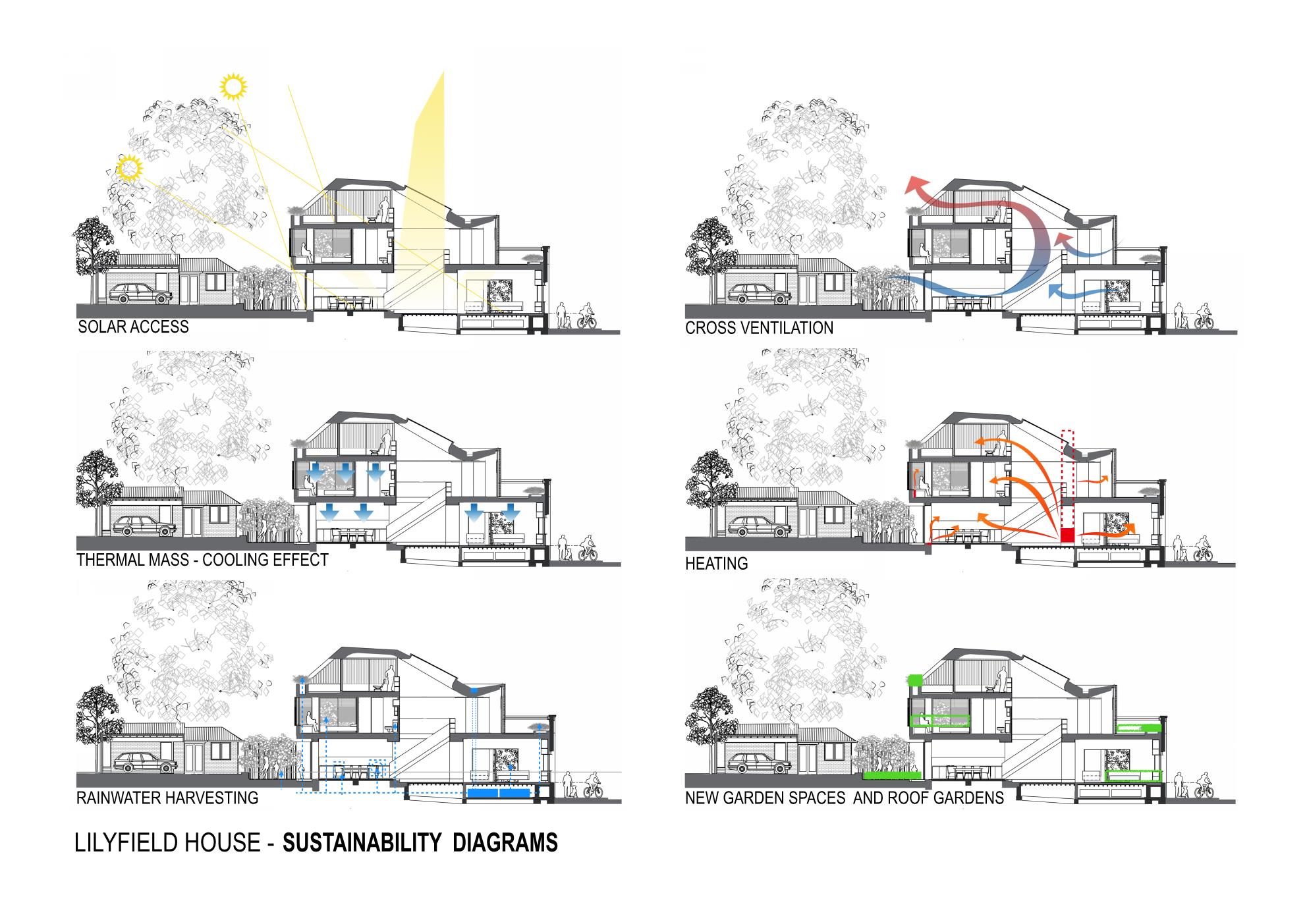Sustainable Concrete House
Built in 1916, Lilyfield House comprises alterations and first and second-floor additions to a residence and former shop building.Combining internal and external rooms and volumes, the house revolves around the central atrium, connecting to garden terraces. White set render, sealed, identifies retained masonry from the original house. TTW expertise was critical for the off-form concrete house in which the structure is largely exposed. Featuring a double fronted block (freestanding house and former shop building), the facade of the existing building was preserved and a new off-form concrete frame was built over two levels with a steel frame for the top level. The central atrium stair void was engineered with structural steel stairs and glazing support. Additionally, TTW overcame structural challenges in the following:
- cross-bracing of the house on its upper two levels
- its foundations through the old shop subfloor (working around the existing fabric)
- fitting the facade panels as pre-made modules from the inside out, lack of access from the side boundaries
Award-winner of the Inner West Council Sustainability Award, Lilyfield House is efficient and sustainable. It uses less electricity than a one-person household and outperforms water efficiency targets. Designed with simple and reduced materials, the house contributes to sustainability with the following:
- Its envelope re-uses existing fabric
- The house maximises passive heating and cooling and does not require air conditioning
- Natural light through the three-storey top-lit atrium
- Exposed concrete soffits and walls together with historic masonry walls provide thermal mass and radiate cool in hot weather
- In winter, the well-insulated structure holds the heat gained through north glazing at three levels, and dark polished bluestone floor radiates absorbed winter sun
- Rainwater harvesting is connected to toilets, laundry and garden
- Hot water is provided utilising renewable energy (heat pump)
- Heating is a combination of a high-efficiency European hydronic heating system and a double-sided gas fireplace, with maximised heat distribution via the atrium
- Solar harvesting











